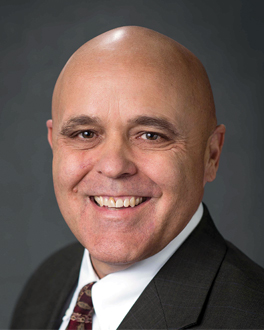 Sean Mockbee, chief executive officer of View Point Senior Care, tells Provider that when making the decision to build and manage standalone memory care units, separate from assisted living communities, it is key to consider a few unique elements among the standard pros and cons of starting a new business in the long term and post-acute care space.
Sean Mockbee, chief executive officer of View Point Senior Care, tells Provider that when making the decision to build and manage standalone memory care units, separate from assisted living communities, it is key to consider a few unique elements among the standard pros and cons of starting a new business in the long term and post-acute care space.
Mockbee first came into operating standalone memory care facilities in 2013 when his company bought a dedicated building, which led to buying a second mostly memory care assisted living community, and the opening of a third fully memory care unit that opened in March.
A Competitive Challenge
Despite the supply-demand pressures in the state of Arizona where View Point Senior Care operates, the competition for clients is only one supply challenge.
“I think operating memory care is not as lucrative as it has been in Arizona. We are not a certificate-of-need state, so there are beds galore and a lot of new development in the last three and a half years,” he says. There is also a lot of competition for staff, since the worker pool has not grown along with the supply of senior housing in the state.
“We are fighting for the same med techs, same nurses as everyone else and have had to increase wages like crazy to stay competitive,” Mockbee says.
When providers look at memory care-only, they should also know the ratio of staff to resident is much higher than in traditional assisted living, around a 6:1 ratio, he says.
“You cannot have a hallway of one or two for 25 people. Our labor rates are very high and maybe double what assisted living would require. It is all pure labor and workforce costs in memory care,” Mockbee says.
Capital Needed for Memory Care
In addition, there is the physical plant difference between memory care buildings and regular assisted living, he adds, with much more upfront capital requirements in play from the get-go.
“To keep memory care residents safe, you have added items like exit alarms, special locks, more cameras, and additional sensing around the campus so nobody can get out when wandering,” he says. “There is also the replacement cost of furniture. It is just a fact that memory care residents are harder on the furniture. There are also more incontinence issues, which lead to more replacement costs.”
Why Get Started?
With all of these challenges, there are of course more reasons on the reward side to get started in memory care. Mockbee points to a couple, one based on the culture of care and one based on the dollars and cents.
“For me, getting into memory care is about the residents and their families almost feeling more appreciative of what we are doing. These people need our help. The quality of life and quality of the setting that we have arranged specifically for those with dementia and Alzheimer’s is something the families and residents can see the benefits of doing,” he says.
On the business side, the memory care operation is mostly private pay. While there are operators who take Medicaid residents, many do not.
Mockebee’s campuses are also not small, with beds ranging in the 90- to 115-level, but for those operators that have memory care as a carve-out of a larger campus, the memory care space is usually a small slice of the pie.
“In a CCRC [continuous care retirement community] with, say, 250 assisted living beds, you may have 30 beds for memory care. The standalone buildings have a higher bed count,” Mockbee says.
Focusing on Memory Care
 Nearby to Arizona is where Gerald Hamilton, owner and operator of Bee Hive Homes in Albuquerque and Edgewood, N.M., and Mesquite and Henderson, Nev., says he runs mainly assisted living communities, with one of the four facilities in Nevada a memory care-only community.
Nearby to Arizona is where Gerald Hamilton, owner and operator of Bee Hive Homes in Albuquerque and Edgewood, N.M., and Mesquite and Henderson, Nev., says he runs mainly assisted living communities, with one of the four facilities in Nevada a memory care-only community.
Only in operation since August 2020, the memory care building is still in fill-up mode, he says. Hamilton says he started the unit, which has room for 15 residents, because of the specific and different needs that those with dementia and other related diseases have in their day-to-day lives.
Like Mockbee, he points to the physical plant needs as a priority for those providers looking to enter the space, noting the costs can run fairly high when it comes to making the move into memory care-only.
Building From the Ground Up
One thing Bee Hive Homes did with their one standalone memory care building was to start from scratch, since Hamilton says modifying an existing building to take care of the security and monitoring needs in memory care is cost prohibitive when compared to building a new facility.
“Generally speaking, and each state is different. Memory care needs to have a limited access protocol to get into and out of the building. Most have keypads with electronic locks on the door and a combination to be able to get into the building and to exit,” he says.
Another consideration is the fencing needed around the campus. “You have to construct these so residents can get outside and enjoy the sunshine and fresh air without getting away from the building. We don’t have those considerations for general assisted living,” Hamilton says.
It is these costs and the staffing that generally lead to memory care getting 30 to 40 percent more on base monthly rates.
“If you renovate or remodel or build, you can get paid back fairly quickly with the increased rents that go into having memory care rooms,” he says. “It is all mostly private pay, but that depends on the state. I know of memory care owners in the Midwest who can do Medicaid as well, but in my state the Medicaid reimbursement rates are far below our private rates,” he says.
Growth Prospects
The outlook, Hamilton says, is positive for memory care-dedicated businesses, at least once the pandemic clears and operations and admissions return to some sort of normal.
“In another year or two when the sector stabilizes, there will be good growth opportunities,” he says.
In the end, the attraction for consumers is there when it comes to memory care because the families of those with the special needs recognize their loved ones require unique attention.
“They need a different environment and level of training from staff, and it takes more attention from more staff because residents often cannot communicate what their needs are on things like pain for example,” Hamilton says. “They may not be able to tell you that, and the provider has to know the resident and look for clues in their patterns and behavior.”